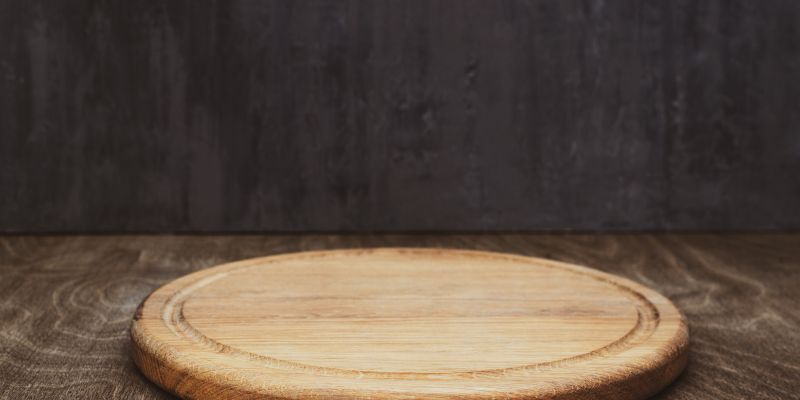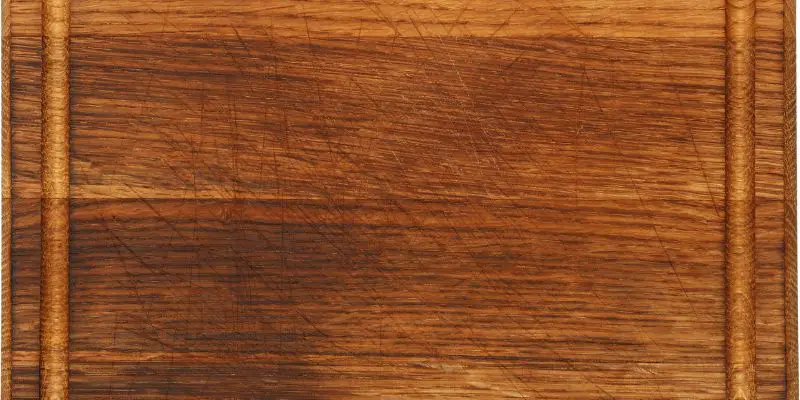Yes, ash wood is a good choice for cutting boards due to its durability and resistance to damage. Ash wood is renowned for its ruggedness and ability to withstand heavy use, making it an excellent material for cutting boards that will stand the test of time.
Additionally, ash wood is known for its beautiful grain patterns, adding an aesthetic appeal to any kitchen. Its tight grain structure also makes it resistant to absorbing liquids and odors, further enhancing its suitability for use in cutting boards. Overall, ash wood is a reliable and attractive option for those seeking a high-quality cutting board.
Benefits Of Ash Wood For Cutting Boards
Ash wood is a popular choice for cutting boards due to its numerous benefits. From hardness and durability to natural resistance to moisture, and attractive grain patterns, ash wood offers a range of features that make it an excellent material for cutting boards.
1. Hardness And Durability
Ash wood is known for its exceptional hardness, making it an ideal material for cutting boards. Its hardness allows the board to withstand the constant wear and tear of cutting, chopping, and slicing without easily getting scratched or damaged. This means that your ash wood cutting board will have a longer lifespan compared to other types of wood, ensuring you can enjoy its benefits for years to come.
2. Natural Resistance To Moisture
Ash wood exhibits natural resistance to moisture, which is a crucial factor for cutting boards. Thanks to its closed-cell structure, ash wood is less likely to absorb water, preventing warping or swelling that can happen with other types of wood. This resistance to moisture also alleviates concerns about bacteria growth since the wood’s natural moisture resistance makes it more difficult for bacteria to penetrate and thrive.
3. Grain Patterns And Aesthetics
Ash wood is known for its beautiful grain patterns, which adds an appealing aesthetic to cutting boards. The grain patterns of ash wood can range from straight and even to a striking combination of straight and wavy lines, giving each cutting board a unique and visually pleasing appearance. Whether you prefer a more traditional or modern look, ash wood cutting boards can complement any kitchen decor.

Limitations Of Ash Wood For Cutting Boards
Ash wood, despite its many qualities, does have some limitations when it comes to using it for cutting boards. One such limitation is its susceptibility to scratches and dents. While ash wood is known for its durability, frequent use of cutting boards can eventually lead to signs of wear and tear.
Being a softer hardwood, ash wood is prone to scratching when sharp knives are used on its surface. These scratches can not only affect the aesthetic appeal of the cutting board but also make it more challenging to clean and maintain hygiene.
Additionally, dents can also occur on ash wood cutting boards when heavy objects are repeatedly dropped or slammed onto them. These dents can create uneven surfaces, affecting the functionality of the board and making it less ideal for cutting and chopping.
Another limitation of ash wood for cutting boards is its limited resistance to heat. While ash wood does offer some heat resistance, it is not as heat-resistant as other hardwoods commonly used for cutting boards, such as maple or walnut.
Exposing ash wood cutting boards to high temperatures, such as placing hot pots or pans directly on them, can cause the wood to warp or even develop cracks over time. This can compromise the durability and longevity of the cutting board.
Ash wood cutting boards require regular maintenance and care to ensure their longevity. Due to their susceptibility to scratches and dents, it is important to properly clean and sanitize ash wood cutting boards after each use to prevent the accumulation of bacteria and food particles.
Using a mild soap and warm water, gently wash the cutting board, making sure to remove any stains or residue. After cleaning, thoroughly dry the cutting board to prevent moisture from penetrating the wood, which can lead to warping or cracking.
In addition to regular cleaning, ash wood cutting boards can benefit from occasional oiling to maintain their appearance and extend their lifespan. Applying a food-grade mineral oil or specifically designed cutting board oil can help nourish the wood and protect it against damage from moisture and dryness.
Furthermore, it is advisable to avoid prolonged exposure to direct sunlight or extreme temperatures, as this can accelerate the deterioration of ash wood cutting boards.
Comparing Ash Wood To Other Materials For Cutting Boards
Ash wood is an excellent choice for cutting boards due to its durability, resistance to moisture, and natural antimicrobial properties. Compared to other materials, ash wood offers the perfect balance of strength and flexibility, making it a top contender for any kitchen.
Comparing Ash Wood to Other Materials for Cutting Boards
Making the right choice when it comes to a cutting board is essential for every home chef. With so many materials available, it can be overwhelming to decide which one is the best fit for your needs. In this section, we will compare ash wood, a popular choice for cutting boards, to other materials such as bamboo, maple, and walnut. By understanding the unique characteristics and benefits of each material, you can make an informed decision that will enhance your cooking experience.
Ash Wood Vs. Bamboo
Bamboo cutting boards have gained popularity in recent years due to their sustainable and eco-friendly nature. However, when it comes to durability and longevity, ash wood is a reliable option. While bamboo is known for its hardness, ash wood surpasses it in terms of toughness. This means that an ash wood cutting board is less likely to develop deep knife marks or warping over time. Additionally, ash wood has natural antimicrobial properties that inhibit the growth of bacteria, ensuring a hygienic cutting surface.
Ash Wood Vs. Maple
Maple is often considered the gold standard for cutting boards due to its durability and moisture resistance. However, ash wood offers similar advantages while also providing a unique aesthetic appeal. Both ash wood and maple have tight grain patterns that make them resistant to knife marks and moisture absorption. Furthermore, the light color and subtle grain pattern of ash wood can add a touch of elegance to your kitchen. Whether you prefer the classic beauty of maple or the distinct charm of ash wood, both materials are excellent choices for cutting boards.
Ash Wood Vs. Walnut
Walnut cutting boards are prized for their rich color tones and luxurious appearance. While walnut offers undeniable beauty, ash wood holds its own with its remarkable strength and durability. Ash wood is renowned for its shock resistance and ability to endure heavy daily use. It can withstand the pressure and force applied by sharp knives without compromising its integrity. Furthermore, ash wood is lighter in weight compared to walnut, making it easier to handle and maneuver in the kitchen.
To summarize, ash wood is a fantastic choice for a cutting board due to its durability, toughness, and natural antimicrobial properties. While it may not be the most well-known material, ash wood offers a viable alternative to other popular choices like bamboo, maple, and walnut. Whether you prioritize sustainability, longevity, or aesthetic appeal, ash wood can meet your requirements. By understanding the unique characteristics and advantages of each material, you can confidently select the perfect cutting board for your culinary needs.

Frequently Asked Questions For Is Ash Wood Good For Cutting Boards
Is Ash Wood A Good Material For Cutting Boards?
Yes, ash wood is a great choice for cutting boards. It is a hardwood that is known for its durability and strength. Ash wood is resistant to bacteria growth, easy to clean, and has natural moisture resistance. Additionally, it’s a sustainable option since ash trees are fast-growing and abundant.
So, you can trust ash wood to provide a reliable and long-lasting cutting surface for all your kitchen needs.
What Are The Benefits Of Using Ash Wood For Cutting Boards?
Using ash wood for cutting boards offers several benefits. Firstly, its dense and sturdy nature makes it highly resistant to knife marks and scratches. Secondly, its natural moisture resistance prevents the growth of bacteria, making it a hygienic choice. Lastly, ash wood’s attractive grain pattern adds a touch of elegance to your kitchen.
So, not only is it functional, but it also enhances the aesthetic appeal of your cutting board.
How Does Ash Wood Compare To Other Types Of Wood For Cutting Boards?
When compared to other types of wood, ash wood holds its own for cutting boards. It is similarly durable and resistant to water and bacteria as other hardwoods, such as maple and walnut. However, ash wood provides a unique and beautiful grain pattern, adding visual interest to your cutting board.
Overall, ash wood is a reliable and stylish choice for any cutting board needs.
Conclusion
To sum it up, ash wood can be an excellent choice for cutting boards due to its strength, durability, and resistance to moisture. Its tight grain pattern helps prevent bacteria growth and makes it easier to clean. Additionally, ash wood has a beautiful appearance, adding a touch of elegance to your kitchen.
So, if you’re in search of a reliable and aesthetically pleasing cutting board, consider opting for ash wood.



One thought on “Is Ash Wood Ideal for Cutting Boards? Uncover the Truth!”